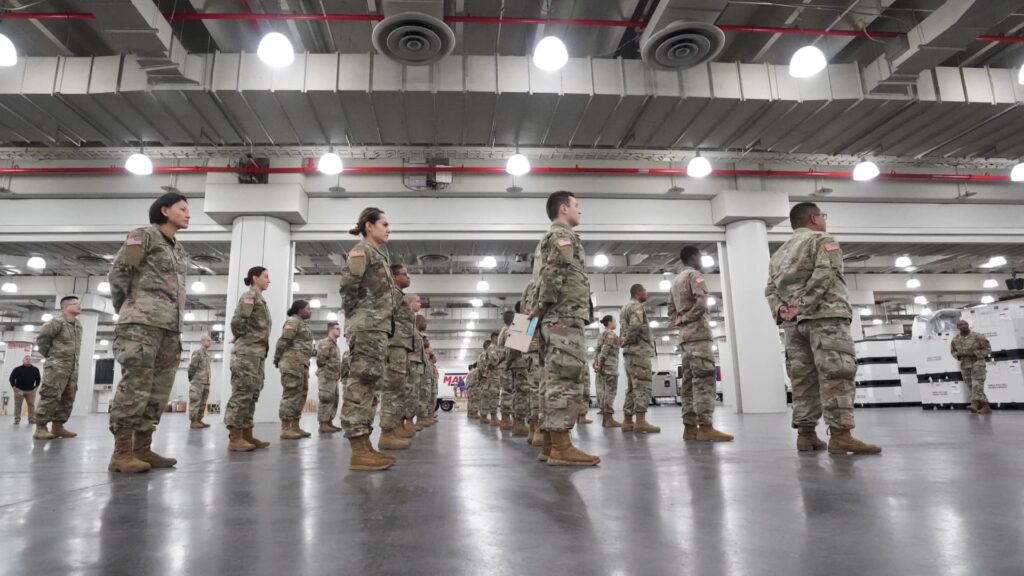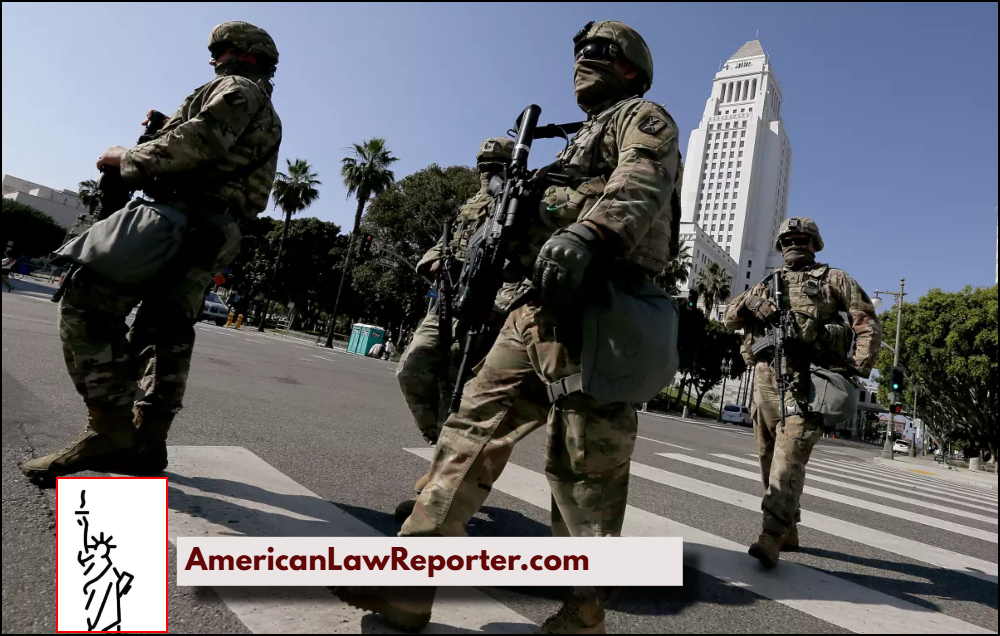The phrase “martial law” evokes images of military personnel patrolling city streets, suspended civil rights, and dramatic disruptions to daily life.
Though rare and often associated with foreign authoritarian regimes, martial law is not outside the scope of possibility in the United States. With mounting tensions across Los Angeles—from encampments in MacArthur Park and Skid Row to rising political friction over immigration and policing—many Californians are quietly asking: What would it look like if martial law were declared here?
Let’s explore what martial law means, how it could be implemented in California, and what the legal, social, and national consequences might be if it came to pass in the Golden State.
What Is Martial Law?

Martial law is the imposition of direct military control over normal civilian functions of government, typically in response to a temporary emergency. These emergencies may include natural disasters, insurrections, terrorist attacks, or large-scale civil unrest. Under martial law, the military can replace local law enforcement, and certain constitutional rights—such as protection against unreasonable searches, freedom of assembly, or even habeas corpus—can be suspended.
While the U.S. Constitution does not explicitly mention martial law, its legality has been supported through precedent and limited legislation. The Posse Comitatus Act generally restricts the federal government from using the military for domestic law enforcement, but exceptions exist—especially when authorized by Congress or the President under the Insurrection Act.
Why Would Martial Law Be Declared in California?
While martial law remains an extreme and rare measure, current developments in California—particularly in Los Angeles—have pushed the state to the brink of such a possibility.
Tensions have reached a boiling point after a federal judge ruled against the Trump administration’s deployment of National Guard troops in the state, sparking a constitutional clash over the limits of federal authority and the rights of state governments.
On Thursday, June 12, Senior District Judge Charles R. Breyer issued a ruling blocking the administration’s mobilization of the National Guard in Los Angeles, where federal immigration raids had already triggered outrage among community members and city leaders. In response, protests erupted not just across California, but nationwide, as demonstrators rallied against what they see as a militarized crackdown on immigrant communities.
The president’s decision to deploy nearly 5,000 National Guard troops and U.S. Marines to the Los Angeles area—many of them accompanying ICE agents during high-profile immigration raids—has provoked intense legal and political resistance. California’s request for a court order to restrict the scope of military deployment gained swift momentum, with at least 22 other states filing legal briefs in support.
What makes the situation even more volatile is the scale and coordination of the backlash. On Saturday, June 14, 2025, one of the largest coordinated protest efforts in U.S. history is expected to unfold. Organizers anticipate more than 2,000 protests across all 50 states, ranging from rural towns to major metropolitan areas like New York, Philadelphia, Chicago, and Dallas. International solidarity protests are also scheduled in cities across Britain, Mexico, and Germany. In Indiana alone, three dozen events are planned.
Los Angeles remains the epicenter of this unrest. Protesters have gathered daily outside federal buildings downtown, prompting local officials to seek limits on the military presence, which many believe is aggravating rather than containing public dissent. Meanwhile, law enforcement agencies nationwide are on high alert. In Newark, New Jersey, dozens of officers responded to a reported disturbance at a private immigration detention facility, adding to fears that the immigration crackdown could spark violence or wider instability.
The legal and political standoff between California and the federal government—combined with mass civil resistance, emergency court rulings, and the visible presence of troops in civilian areas—creates a highly combustible situation. If protests grow in size or become unruly, martial law could be invoked as a last resort to “restore order.” Such a move, however, would carry profound implications for constitutional freedoms, public trust, and the balance of power between state and federal governments.
In short, while martial law is not currently declared, California is now grappling with the kind of cascading legal, political, and social crises that make its imposition no longer unthinkable.
What Happens If Martial Law Is Declared?
If the President of the United States declares martial law, the following could happen:
1. Suspension of Civil Liberties
Curfews may be imposed. Public gatherings could be banned. Freedom of the press might be curtailed. Citizens could be subject to searches and detentions without warrants. Courts may be closed or replaced by military tribunals.
2. Military Presence in Civilian Life
Expect to see troops on highways, patrolling streets, guarding public buildings, and controlling access to sensitive zones. Military checkpoints could regulate travel between cities or counties.
3. Temporary Override of State and Local Laws
Local ordinances and city-level governance structures could be sidelined in favor of centralized command under a military leader or a federally appointed administrator.
4. Increased Risk of Civil Unrest
While martial law is often intended to suppress unrest, history shows it can fuel it. The 1992 Los Angeles riots—following the acquittal of officers in the Rodney King beating—led to the deployment of the National Guard, but only after five days of chaos. Today, public distrust of government institutions may amplify resistance rather than suppress it.
Legal Precedents and Limits
U.S. courts have ruled that martial law must be a last resort. In Ex parte Milligan (1866), the Supreme Court ruled that civilians cannot be tried by military tribunals when civilian courts are still operational. The key takeaway: martial law is not absolute. It remains bound—however tenuously—by constitutional oversight.
That said, in a declared emergency, courts themselves could be shuttered or delayed, making legal remedies slow or inaccessible.
Potential Consequences for the Nation
Declaring martial law in California would reverberate nationally. As the most populous U.S. state and the world’s fifth-largest economy if it were independent, California sets policy trends. A military lockdown here would:
- Shake Global Markets: Investor confidence would plummet if martial law disrupted ports like Long Beach and Los Angeles, critical to international trade.
- Heighten Political Divisions: Federal intervention in a progressive stronghold could deepen the national divide between red and blue states.
- Set Precedents for Other States: If used in California, martial law could be invoked elsewhere—normalizing military responses to domestic issues.
The Bottom Line: Should We Be Worried?
Martial law is legally possible but politically explosive. Declaring it would ignite fierce debate across the country, raise constitutional challenges, and possibly cause more unrest than it resolves. Yet the conditions in Los Angeles—systemic homelessness, heightened crime, fractured politics, and environmental precarity—make it a unique case study in how far a society can be pushed before extreme emergency measures are considered.
For now, Californians should stay informed, engaged, and vocal. Civic participation and legal recourse remain the strongest tools against both chaos and authoritarian overreach.
Final Thought
The answer to whether martial law could happen in California isn’t just a legal question—it’s a moral and political one. In a democracy, we must ask not only can the government deploy troops against its own people, but should it? If martial law is ever declared, the story won’t just be about soldiers on streets—it’ll be about the American social contract put to its greatest test.
If you live in California and have concerns about your rights or emergency preparedness, contact your local legal aid organization or civil liberties union.

